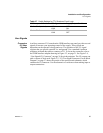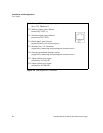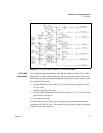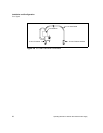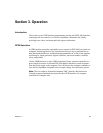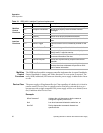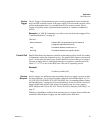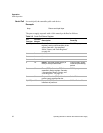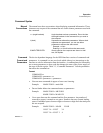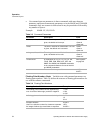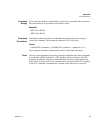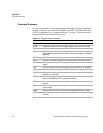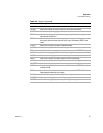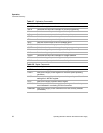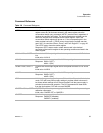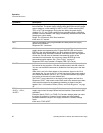Operation
Command Syntax
Release 1.2 33
Command Syntax
Manual
Conventions
The manual uses these conventions when displaying command information. These
characters are not part of the command but are used to denote parameters used with
the command.
Command
Format and
Parameters
The device-dependent language for the GPIB Interface consists of commands and
parameters. A command is a one word code which either gives instructions to the
interface or asks for information from the interface. A command may be followed by
one or more parameters, a short code that changes the state of the power supply or
the state of the bit register. Table 3.3, “Command Parameters” lists the parameters
that affect the command set.
Format:
COMMAND or
COMMAND <parameter> or
COMMAND <parameter>,<parameter>
• You can enter commands in upper or lower case lettering.
Example: MASK FOLD = mask fold
• Do not further abbreviate command names or parameters.
Example: MASK FOLD ≠ MK FOLD
MASK FOLD ≠ MASK FD
• Use a space between the command and the first parameter. Any number of
consecutive spaces is treated as one space. Numeric data may contain leading
spaces. Embedded spaces between digits or between a digit and a decimal point
are not accepted.
Example: MASK FOLD = MASK FOLD
VOUT 3.4 = VOUT 3.4
VOUT 3.4 ≠ VOUT 3. 4
< > (angle brackets) Angle brackets enclose a parameter. Do not include
the angle brackets in the command line you send to
the computer.
/ (slash) Separates two alternative parameters. When a slash
separates two parameters, you can use either
parameter to achieve the same result.
Example:
<1/ON>
Entering
1 or ON will achieve the same result.
COMPUTER ENTRY Words typed on the computer are shown in Arial
text, full capitals.



